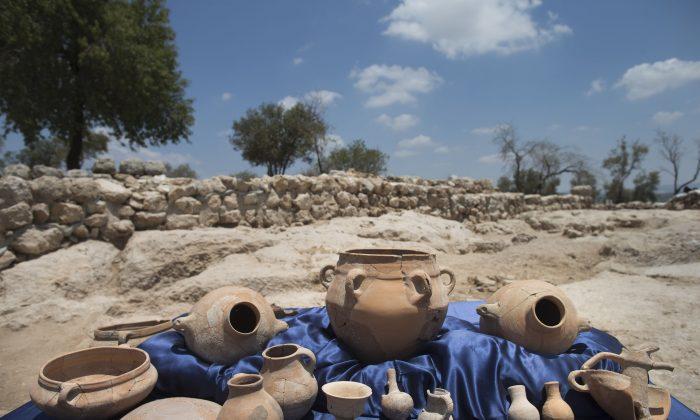King David’s palace was discovered by a team of archaeologists, who said the ruins near Jerusalem are “indisputable proof” there was authority in Judah during the time of the Biblical figure.
“This is the only site in which organic material was found — including olive seeds — that can be carbon-14 dated” to King David’s era, said a representative with the Israeli Antiques Authority, according to USA Today.
Researchers Professor Yossi Garfinkel and Saar Ganor identified one of the structures in the ruins as the palace for King David, reported the Jerusalem Post.
“The ruins are the best example to date of the uncovered fortress city of King David,” giving researchers a step up in understanding the origins of the kingdom of Judah,” they said, adding that “this is indisputable proof of the existence of a central authority in Judah during the time of King David.”
The Post reported that the site of the battle between David and Goliath, called Khirbet Qeiyifa, was likely destroyed in 980 BC.
The archaeologists described the palace even further.
“The southern part of a large palace that extended across an area of about 1,000 square meters [10,800 square feet] was revealed at the top of the city,” Garfinkel and Ganor said, according to Fox News.
The added: “The wall enclosing the palace is about 30 meters [100 feet] long and an impressive entrance is fixed it through which one descended to the southern gate of the city, opposite the Valley of Elah. Around the palace’s perimeter were rooms in which various installations were found--evidence of a metal industry, special pottery vessels and fragments of alabaster vessels that were imported from Egypt.”
They added that it was an excellent site as a lookout over the valley.
“From here one has an excellent vantage looking out into the distance, from as far as the Mediterranean Sea in the west, to the Hebron Mountains and Jerusalem in the east,” the archaeologists said. “This is an ideal location from which to send messages by means of fire signals,” the two said, according to LiveScience.





